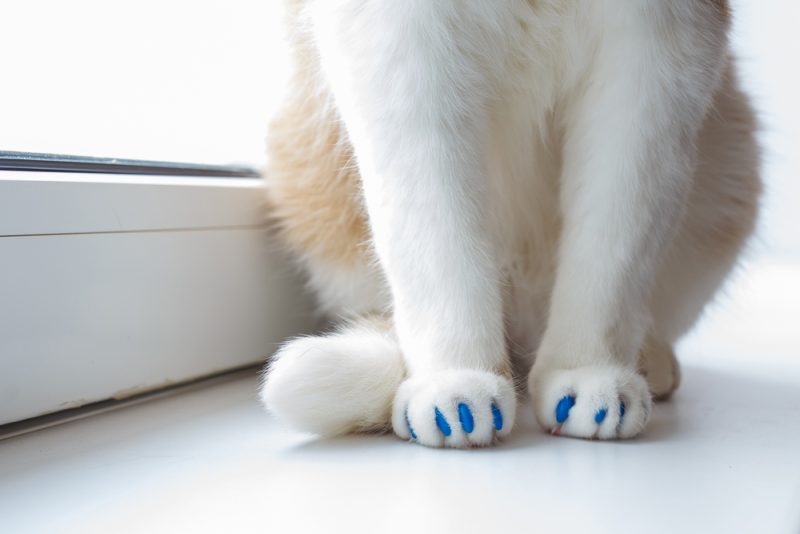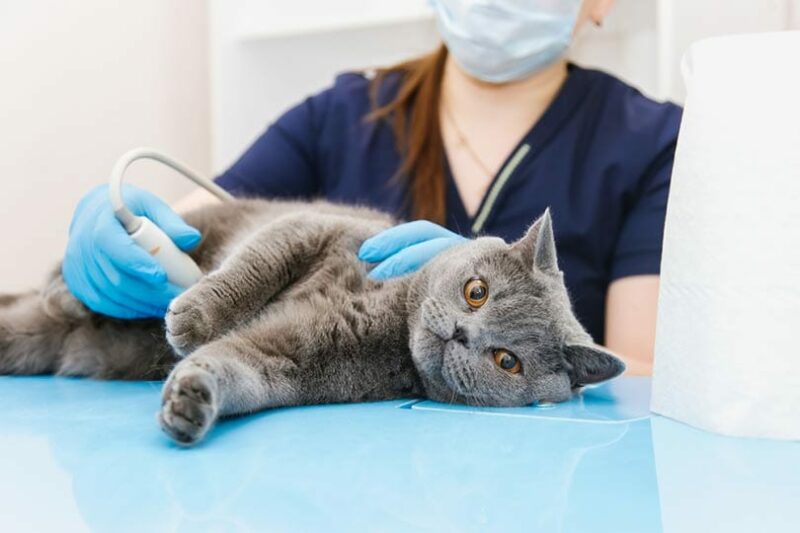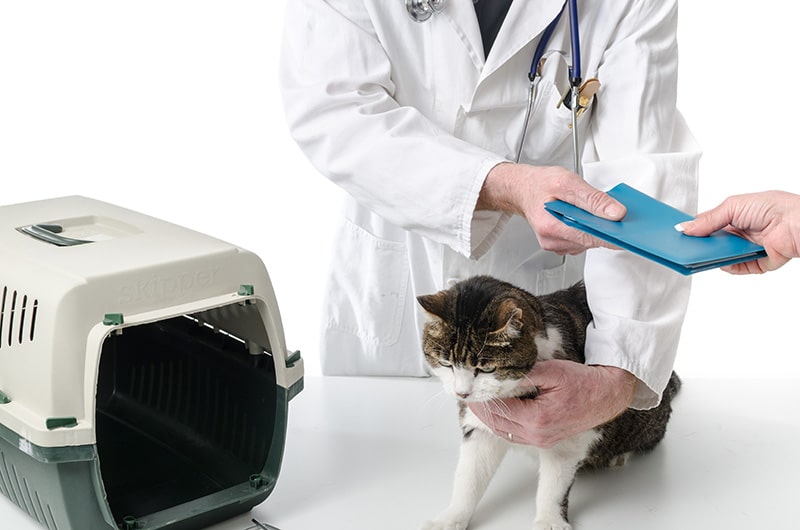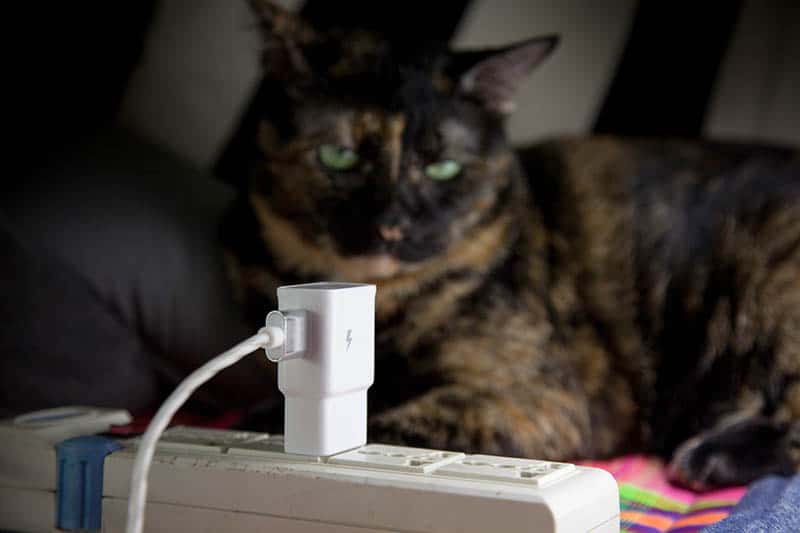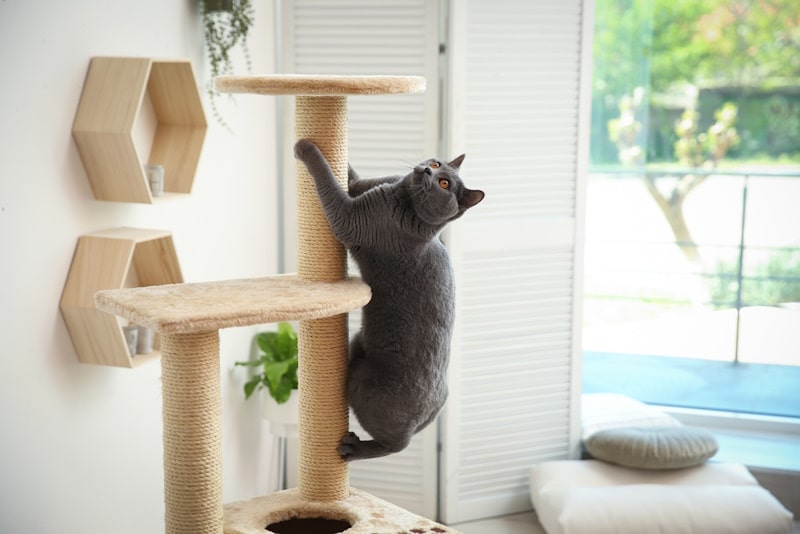Cats are wonderful, loving animals that can bring a great deal of joy and enrichment to your life. Unfortunately, though, some people are allergic to these furry pets. While some allergies are too severe to allow a cat in the home, people with mild allergies can often manage their allergies and the environment in such a way as to reduce their symptoms at home.
It does take effort and knowledge of how to manage allergies for an allergic person to comfortably share a home with a cat. In this article, we go over a few tips for how to do so.
What Causes Cat Allergies?
An allergy to cats is a result of a person’s immune system overreacting to something that a cat naturally produces. For most people, the allergen is a protein that cats produce, called Fel d1. However, cats produce several such proteins, so you may be allergic to another protein or a combination of them. Fel d1 is most concentrated in a cat’s saliva and is made in considerable amounts by their sebaceous glands.
When a cat grooms themselves, they deposit this protein all over their body. Once the saliva dries, the proteins can become airborne as microscopic particles, also known as feline dander. Many people mistakenly believe that they are allergic to cat hair, but this isn’t the case. While cat hair can have dander attached to it, causing people to be exposed to the protein allergens, the allergy isn’t caused by the hair itself.
This means any cat can cause allergy symptoms, including hairless cats. To help manage your allergies to cats, it’s important to understand how these allergies are caused so you best know how to reduce your exposure.


Tips to Live With Cat Allergies
Please note that the content that follows is geared toward those with a mild allergy to cats. If you have a severe allergy, it isn’t recommended to be around felines without the approval of your medical doctor.
1. Talk to an Allergist
While many people want a doctor’s visit to be the last resort, it shouldn’t be overlooked and is the ideal starting point to both confirm your allergy and ascertain its extent. For some people, it doesn’t matter how many changes they implement in their home, allergens can still be a significant issue. By visiting an allergist, you’ll be able to identify if your allergy issues are only related to your cat or if there are other problems at play.
An allergist will also be able to help you determine the best ways to reduce your body’s reaction to the presence of allergens in your home. You can discuss with them the changes you’ve already made and see if they have additional suggestions.

2. Consider Low-Shedding Breeds
While there are no hypoallergenic cats, there are some cats that will shed fewer allergens in your home than others. Cat breeds that are shorthaired or hairless do tend to shed less than longhaired breeds, so you may find it easier to manage the allergens coming from your cat with a lower shedding breed. Your only source of allergens from such a cat would mostly be their dander and not their hair or fur (because they would shed less).
Breeds like the Sphynx, Bengal, Bombay, Siamese, and Cornish Rex tend to be low-shedding cat breeds. Surprisingly, the Siberian is also a low-shedding breed, though their long, thick coat would lead you to think otherwise.
A cat with minimal shedding will still leave allergens in your home between their dander, saliva, and urine, but less shedding will result in slightly less dander around your home (since they won’t be shedding their hair all over the place).
It’s also worth noting that sometimes, health issues that cause your cat to shed more may exacerbate your allergies as a result. Ensuring that your cat is in good health can therefore help you manage your allergies better!
3. Clean on a Schedule
Keeping things clean will help to reduce the allergens in your home. That said, cleaning may actually make your allergy symptoms worse, as some people find that it tends to kick up excessive amounts of dander. For such people, using professional cleaners, automated cleaning devices, or face masks can help.
Cleaning too little can allow allergens to build up. Therefore, it’s important to find a cleaning schedule that works to reduce your allergy symptoms while still being manageable with your lifestyle.
Routine cleaning should include wiping down hard surfaces, including walls and fan blades, sweeping, mopping, vacuuming, and keeping upholstered surfaces clean. Wash bedding, curtains, and other linens regularly, including your cat’s bedding and favorite blankets, to ensure that dander is minimized throughout your home. It may take some trial and error to determine what type of cleaning schedule works best for you.
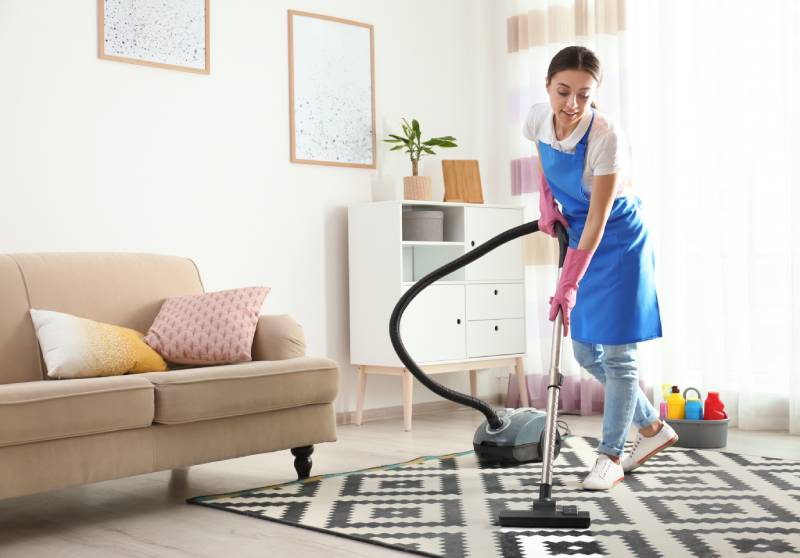
4. Consider a HEPA Filter
When it comes to minimizing the allergens in your home, proper filtration can be the difference between allergy symptoms and no symptoms. Adding air filters throughout your home can help significantly, but you may also find success by adding special high-efficiency particulate air (HEPA) filters to the air filtration system already present in your home.
HEPA filtration systems can be quite pricey, but they’re often worth the investment and can even help improve your pet cat’s health. If HEPA filters are out of your budget, you may consider replacing your regular air filters more frequently to reduce the allergens circulating in your home.
5. Limit Upholstered Surfaces
It may not be practical to eliminate all of the upholstered surfaces in your home, but by reducing upholstery, you’ll reduce the places for allergens to collect. If you have upholstered furniture in your bedroom, living room, dining room, and office, then you have multiple spots for allergens to collect.
If you can limit the upholstery by swapping upholstered surfaces to hard surfaces or ones with washable fabric, you will be able to better manage the allergens than if there are a large number of upholstered surfaces for allergens to build up.
In lieu of reducing upholstered surfaces, consider making some areas less accessible to your cat, reducing the allergens in some areas. Ideally, you should be limiting your cat’s access to your bed linens and other places where you spend a lot of time.
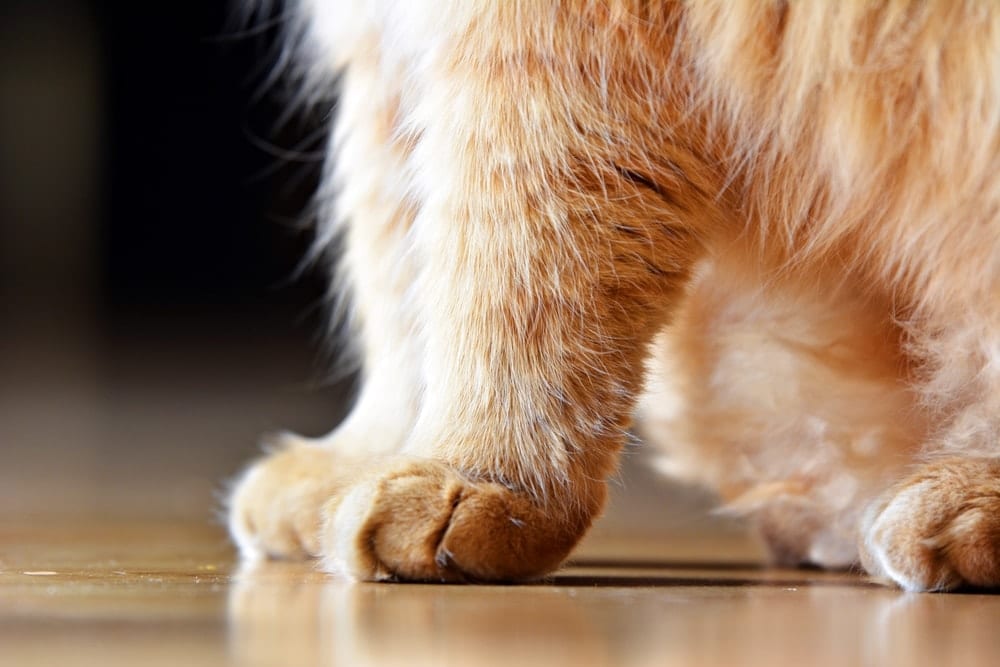
6. Groom Your Cat
The more often you brush or bathe your cat, the better off things will be for you. If you can brush your cat every couple of days, you will reduce the loose dander present on your cat’s body. While bathing cats regularly isn’t typically recommended, it may be temporarily beneficial if you have notable allergies to your cat. Bathing your feline can help reduce the amount of dander that they produce for up to 48 hours, so it might be a feasible idea for something like a weekend.
Regular grooming can help reduce dander, but if your cat is a heavy shedder, consider using the services of professional groomers to save yourself the hassle of a sneeze-fest.
Certain cat shampoos are made with the intent of reducing allergens on your cat. These are sometimes available in waterless options, making them easier to use on cats that are resistant to baths.
7. Keep the Litter Box Clean
The more often you clean your cat’s litter box, the fewer allergens will be present for your cat to track around the home. This doesn’t just mean emptying the litter box regularly, though.
You will need to empty the box and wipe it clean at least a couple of times per month to reduce the allergens in your home. You also need to wipe down the surfaces around the litter box at least once per week, including the walls and flooring closest to the box.
If you feel like these interventions aren’t doing enough, you can also wipe your cat’s feet down once or twice per day with pet-safe wipes to reduce the allergens they spread after using the litter box.
If you're dealing with stubborn smells in your litter box or elsewhere in your house, a good cat litter deodorizer can work wonders.
We recommend Hepper's Advanced Bio-Enzyme Cat Litter Deodorizer, an all-natural litter additive that fights odors using bio-enzymes. This effective deodorizer is fragrance-free and works on all types of cat litter. It's also effective anywhere you have lingering odors, including diaper pails, garbage cans, and kennels! At Catster, we’ve admired Hepper for many years and decided to take a controlling ownership interest so that we could benefit from the outstanding designs of this cool cat company!
8. Try an Allergen-Reducing Food
In the last few years, foods intended to reduce the allergens produced by your cat have come onto the market. These won’t eliminate the allergens coming from your cat, but with regular feeding, they can reduce the number of them, making them easier to deal with.
These foods are available without a prescription, but they do require time to work. You will likely need at least 6 weeks of your cat only eating the food to significantly reduce the number of allergens that they produce. Also, whether it will truly benefit you is not yet well established.
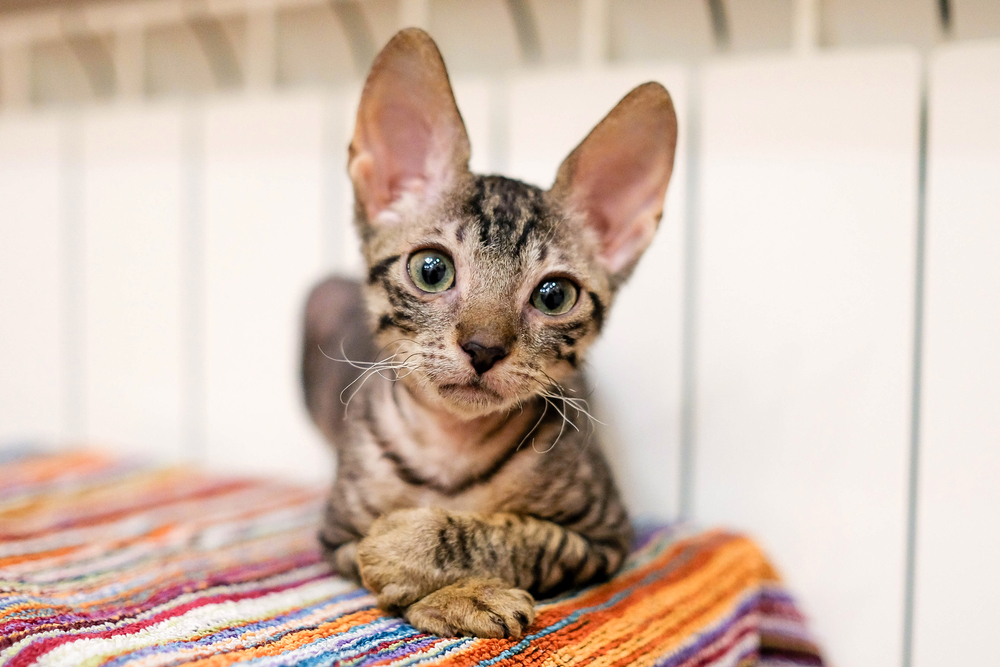
 Conclusion
Conclusion
Living in a home with something that you are allergic to can be difficult, especially if you are living with a cat that has free roam of the whole household. You will need to be committed to making changes in your home to really reduce the presence of allergens to make life easier for you and your cat.
If you feel like you are struggling to get allergies under control, talk to an allergist or other professional to determine if there are other things you can try to help make your allergy symptoms more manageable for you and the other members of your household.
Featured Image Credit: LightField Studios, Shutterstock





